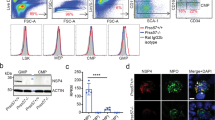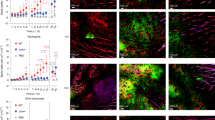Abstract
INFILTRATION of inflamed or injured tissues by polymorphonuclear leukocytes is a fundamental pathophysiological response. Undoubtedly, there are numerous mechanisms by which leukocytes are attracted to an area of damage. One possibility is that cellular injury could release or activate a proteolytic enzyme which could generate chemotactic factors. Extracts of parenchymatous tissues1 and cells2 are chemotactic when they are incubated with complement sufficient serum. Macrophages3 and leukocytes4 contain a proteinase which generates chemotactic peptides, and recently human polymorphonuclear leukocytes have been shown to secrete an enzyme which activates complement5. Lazarus and Barrett extracted and characterised a serine proteinase which induced polymorphonuclear leukocyte infiltration of the skin when injected intradermally6. Subsequently, this proteinase, which is both cytotoxic and phlogistic, has been purified to homogeneity from whole human skin7, human epidermis8, human lymphocytes9 and cultures of newborn mouse epithelium (G.S.L., unpublished). This report demonstrates that this proteinase is significantly more active than trypsin, plasmin or Pronase in generating polymorphonuclear leukocyte accumulation and that chemotactic activity is largely dependent on complement activation.
This is a preview of subscription content, access via your institution
Access options
Subscribe to this journal
Receive 51 print issues and online access
$199.00 per year
only $3.90 per issue
Buy this article
- Purchase on Springer Link
- Instant access to full article PDF
Prices may be subject to local taxes which are calculated during checkout
Similar content being viewed by others
References
Hill, J. H. & Ward, P. A. J. exp. Med. 130, 505–58 (1969).
Brier, A. M., Snyderman, R., Mergenhagen, S. E. & Notkins, A. L. Science 170, 1104–06 (1970).
Snyderman, R., Shin, H. S. & Dannenberg, A. M. J. Immun. 109, 896–898 (1972).
Goldstein, I. M. & Weissman, G. J. Immun. 113, 1583–88 (1974).
Wright, D. G. & Gallin, J. I. Inflammation 1, 23–29 (1975).
Lazarus, G. S. & Barrett, A. J. Biochim. biophys. Acta 350, 1–12 (1974).
Hatcher, V. B., Lazarus, G. S., Levine, N., Burk, P. G. & Yost, F. J. Biochim. Biophys. Acta 483, 160–171 (1977).
Levine, N., Hatcher, V. B. & Lazarus, G. S. Biochim. biophys. Acta 452, 458–67 (1976).
Hatcher, V. B., Oberman, M. S., Lazarus, G. S. & Grayzel, A. I. Fedn Proc. 36, 892 (1977).
Snyderman, R., Phillips, J. K. & Mergenhagen, S. E. J. exp. Med. 134, 1131–43 (1971).
Author information
Authors and Affiliations
Rights and permissions
About this article
Cite this article
THOMAS, C., YOST, F., SNYDERMAN, R. et al. Cellular serine proteinase induces chemotaxis by complement activation. Nature 269, 521–522 (1977). https://doi.org/10.1038/269521a0
Received:
Accepted:
Published:
Issue Date:
DOI: https://doi.org/10.1038/269521a0
This article is cited by
-
Induction of mast cell accumulation, histamine release and skin edema by N49 phospholipase A2
BMC Immunology (2009)
-
Human mast cell chymase induces the accumulation of neutrophils, eosinophils and other inflammatory cells in vivo
British Journal of Pharmacology (1998)
-
Bone-derived macrophage chemotactic factors: Methods of extraction and further characterization
Calcified Tissue International (1985)
-
Decreased complement activity after bilateral renal ischemia in rats
Research in Experimental Medicine (1981)
Comments
By submitting a comment you agree to abide by our Terms and Community Guidelines. If you find something abusive or that does not comply with our terms or guidelines please flag it as inappropriate.



